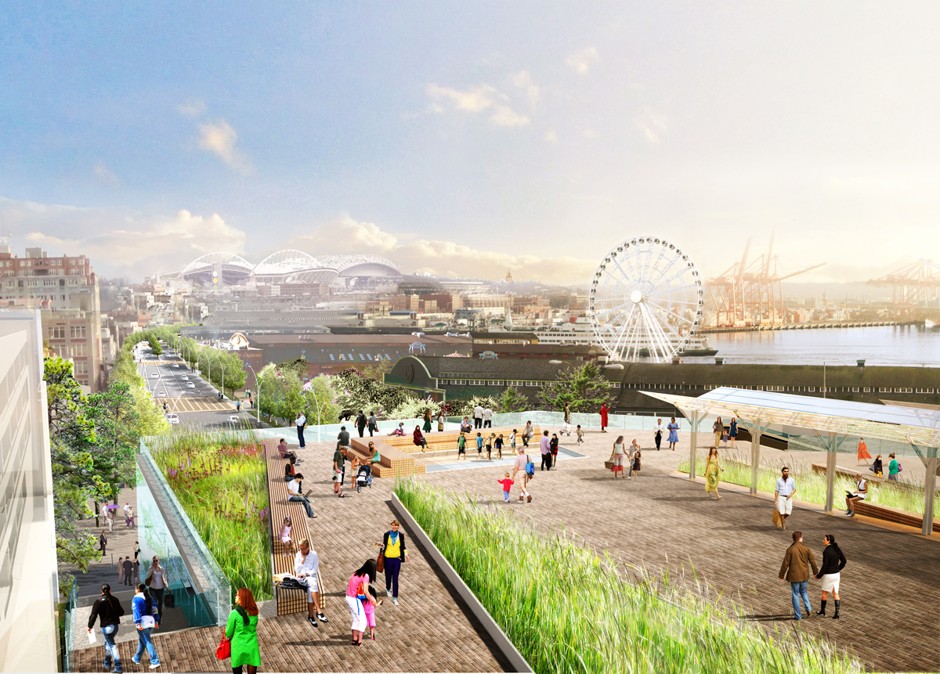It has been abandoned for five decades, a railway relic that once served Queens passengers on the old Rockaway Beach branch of the Long Island Rail Road. For all those years, no one paid much notice to the ghostly tracks, long overgrown with trees and vines, as they ran silently behind tidy houses in Rego Park, dipped through ravines in Forest Park and hovered above big-box stores in Glendale.
That is, until the
High Line expanded the possibilities of a public park.
Now, the three-and-a-half-mile stretch of rusty train track in central Queens is being reconceived as the “QueensWay,” a would-be linear park for walkers and bicyclists in an area desperate for more parkland and, with the potential for art installations, performances and adjacent restaurants, a draw for tourists interested in sampling the famously diverse borough.
“It’s Queens’s turn,” said Will Rogers, president and chief executive officer of the
Trust for Public Land, a national nonprofit group that has joined local residents in promoting the idea. “The High Line led to the redefinition of the neighborhoods in Manhattan, whereas the QueensWay will be defined by the neighborhoods it passes through. Essentially, it will be a cultural trail.”
The involvement of the Trust for Public Land, which has 36 offices nationwide, including in Manhattan, has given the project new momentum, bolstering the efforts of the
Friends of the QueensWay, a group with about 2,500 supporters. It did not hurt that the trust hired
Adrian Benepe,
who recently stepped down as the New York City parks commissioner.
Last month, Gov. Andrew M. Cuomo, a native of Queens, awarded the trust a $467,000 environmental protection grant through the state’s Office of Parks, Recreation and Historic Preservation. The grant will help pay for a community planning survey and a feasibility study that will include environmental, engineering and financial assessments of the project, including consideration of the condition of the railway’s trestles, bridges and embankments.
On a recent winter afternoon, the defunct rail line was obscured by a tangle of vegetation, near where it crosses over Yellowstone Boulevard. Tulip trees and Norway maples rose from the center of the tracks, competing for the brittle January sunlight, while the noisy bustle of Queens faded into the background.
Mr. Benepe, who, as parks commissioner for nearly 11 years, oversaw the creation of many miles of esplanades, greenways and bike paths, especially on Manhattan’s edges, agreed that Queens was overdue. “The borough has a lot of parkland, but what it lacks is a long recreational trail,” he said. “The QueensWay will also enable people to get to Forest Park more easily.”
But bringing the park to fruition will not be easy. The modest neighborhoods and light industrial areas through which the abandoned rail line passes cannot provide the tens of millions of dollars that were raised privately by Friends of the High Line, the nonprofit group managing the construction and maintenance of the elevated park on Manhattan’s West Side.
Nor is everyone on the same page about the Queens railway’s destiny; at least one elected official has called for a simultaneous study of reviving the rail line to provide better train service to the increasingly popular Rockaway beaches, damaged as they might be in the short term by Hurricane Sandy. (Mr. Benepe, who is well schooled in community opposition, imagined the potential horror of nearby homeowners at the prospect of the train line’s rumbling to life again.)
Still, the trust has already raised tens of thousands of dollars for the project, in addition to the state grant, and it has broad experience in fostering linear parks, having worked on four dozen such parks, mostly on ground level, around the country. The trust is currently the project manager of Bloomingdale Trail in Chicago, a 2.7-mile former elevated railway that is being converted to a park, in the mold of the High Line.
The QueensWay would have fewer obstacles than the High Line in its creation. For one thing, the land is already owned by New York City (the High Line was owned by CSX Transportation), and the city’s parks department endorsed the trust’s recent grant application to the state. In addition, while there are at least a dozen bridges and a viaduct along the route, most of the QueensWay runs atop earthen berms or through gullies, said Andy Stone, the trust’s New York City director. Rather than having to reconstruct a steel structure more than a mile long, as in the High Line, the linear park would, in some places, require nothing more than the clearing of tracks, the selective removal of trees and the pouring of asphalt.
Unlike the High Line, the QueensWay would welcome bicycles. While the trestles are relatively narrow, long stretches are wide enough — up to 25 feet — to accommodate walkers and bicyclists. New bike paths could connect the park to Flushing Meadows-Corona Park to the north, as well as an existing bikeway in Jamaica Bay to the south. About 250,000 residents live within a mile of the proposed park, and its backers see all kinds of ancillary benefits, from health to traffic. “That’s a lot of carbon footprint,” said Marc Matsil, the trust’s New York state director.
